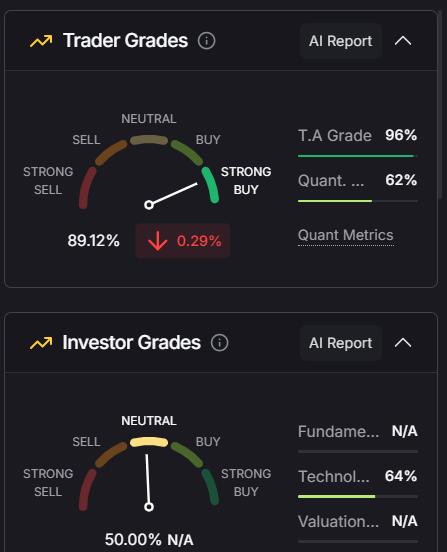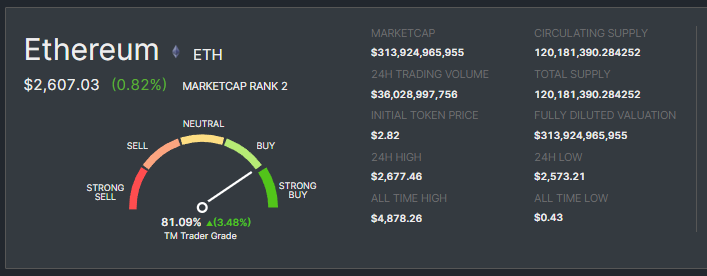Ripple (XRP) Price Prediction 2025: Will XRP Hit $500 This Bull Cycle?
%20Price%20Prediction%202025_%20Will%20XRP%20Hit%20%2410%20This%20Bull%20Cycle_.png)
Ripple’s native token, XRP, is experiencing renewed momentum in 2025, surging to $2.58 and breaking the long-standing $2.50 resistance level. This price movement coincides with Bitcoin's rally past $112,000, signaling that XRP is riding the current bull market wave.
But what’s driving this surge in XRP? Is it sustainable? And could we see XRP hit $5, $7—or even $10—before the end of 2025?

In this highly informative and SEO-optimized blog post, we analyze the factors behind XRP’s rise, evaluate its future potential, and explain why Token Metrics’ AI-powered price prediction tools offer unmatched insights for crypto investors.
🚀 XRP’s Bullish Breakout: A New Chapter in 2025
In July 2025, XRP’s breakout above $2.50 marks one of its strongest price performances since the 2017 bull run. Key drivers behind this bullish trend include:
✅ 1. Ripple’s Legal Victory Against the SEC
Ripple finalized its years-long lawsuit with the U.S. Securities and Exchange Commission (SEC) by paying a $50 million settlement—without admitting XRP is a security. This outcome:
- Removes a major legal overhang
- Boosts investor and institutional confidence
- Clears the path for U.S. regulatory clarity
With the lawsuit resolved, XRP is now eligible for listings, ETF consideration, and greater adoption in regulated financial environments.
✅ 2. Launch of RLUSD Stablecoin
Ripple has successfully launched RLUSD, its native stablecoin backed 1:1 by U.S. dollars. RLUSD provides:
- Liquidity for XRP-based DeFi
- Seamless on/off ramps for cross-border payments
- Utility for RippleNet’s institutional clients
This ecosystem expansion strengthens Ripple’s value proposition and increases XRP utility and demand.
✅ 3. Potential Approval of XRP ETFs
With Ethereum and Bitcoin ETFs already active, XRP is next in line. Analysts estimate:
- A 90%+ likelihood of XRP ETF approval before 2026
- Significant inflows from institutional investors upon approval
ETF listings would make XRP easily accessible in retirement accounts, financial advisors’ portfolios, and wealth management platforms—further legitimizing the asset.
✅ 4. Expanding Global Financial Partnerships
Ripple now boasts partnerships with 300+ financial institutions, including:
- Santander
- Standard Chartered
- SBI Holdings
- Integration with Wormhole for cross-chain liquidity
This positions XRP as a global standard for cross-border payments—a market worth $150+ trillion annually.
📈 XRP Price Prediction for 2025
Analysts and AI models predict a strong upside potential for XRP during this bull cycle. Here's a breakdown of possible scenarios:

Breakout Level to Watch: $3.40
Support Level: $2.10
⚠️ Risks and Challenges Ahead
Despite the bullish momentum, XRP still faces several risks:
❌ 1. Regulatory Ambiguity Outside the U.S.
Although the SEC case is resolved, Ripple faces:
- Different classifications of XRP in Europe and Asia
- New compliance standards (e.g., MiCA)
- Potential resistance from central banks promoting CBDCs
❌ 2. Stablecoin Competition
RLUSD must compete with:
- USDT and USDC (dominant players)
- CBDCs and national digital currencies
- Traditional payment rails like SWIFT GPI
Failure to achieve rapid RLUSD adoption could cap XRP's growth potential.
❌ 3. Market Volatility and Profit-Taking
After explosive gains, whales may lock in profits, causing sharp pullbacks. Key support at $2.10 must hold to maintain bullish structure.
🧠 Why Token Metrics Has the Best XRP Price Prediction Tools
In a fast-moving market, investors need real-time, data-driven predictions—not guesswork. Token Metrics offers the most advanced tools for XRP investors.
✅ 1. AI-Powered Price Forecasts
Token Metrics uses machine learning models trained on years of crypto market data to generate high-accuracy price forecasts.
For XRP, these models consider:
- Whale wallet accumulation
- Cross-border transaction volume
- Stablecoin liquidity metrics
- Token velocity and exchange flows
The result? A forward-looking price forecast you can trust.
✅ 2. XRP Buy/Sell Signals
The Token Metrics platform issues real-time bullish or bearish signals based on:
- Technical indicators (MACD, RSI)
- Exchange net flow
- Trend strength
- Historical reversal patterns
These signals help you:
- Enter at optimal times
- Avoid fake breakouts
- Time your profit-taking during rallies
✅ 3. Trader and Investor Grades

Token Metrics assigns every token—including XRP—a:
- Trader Grade (short-term trend strength)
- Investor Grade (long-term fundamental health)
Both are AI-calculated using 80+ metrics, and they update daily. This helps you:
- Decide whether to swing trade or HODL XRP
- Compare XRP with other cross-border payment tokens
✅ 4. Custom Alerts and Analysis
With Token Metrics, you can set personalized alerts for XRP:
- Price thresholds (e.g., alert me if XRP hits $3.40)
- Percent change triggers (e.g., alert me on +15% move)
- Grade changes (e.g., notify me if Trader Grade goes above 80)
Alerts are delivered via email, Slack, Telegram, or Discord—so you never miss a key movement.
✅ 5. Detailed Token Page for XRP

The XRP profile page on Token Metrics provides:
- Live price chart and ROI
- Real-time exchange volume
- Whale wallet movements
- Historical signal success rates
Everything you need for informed XRP investing in one place.
📊 XRP vs. Other Altcoins in 2025
While many altcoins are chasing narratives (AI, memecoins, DePIN), XRP’s case is fundamentally driven by:
- Regulatory clarity
- Real-world adoption
- Enterprise integrations
Token Metrics’ crypto indices help investors diversify by creating thematic portfolios (e.g., “Institutional Adoption,” “Layer-1 Networks,” “Cross-Border Payments”)—with XRP often at the top of the cross-border category.

📉 What If XRP Corrects?
Corrections are part of every bull market. If XRP fails to hold above $2.50:
- A retracement to $2.10 is likely
- A break below $2.10 could lead to a retest of $1.80
- Traders should watch BTC’s movement closely—if Bitcoin reverses sharply, XRP could follow
Use Token Metrics’ bearish signal alerts to de-risk in real time.
✅ Final Thoughts: XRP Is One to Watch in 2025
With legal clarity, a new stablecoin, ETF approval potential, and over 300 institutional partnerships, Ripple and XRP are in their strongest position in years.
If Bitcoin continues its uptrend and XRP breaks above $3.40, the next major rally could take it to $5–$10 by the end of 2025.
But success depends on regulatory support, stablecoin adoption, and institutional inflows—all factors Token Metrics tracks daily with precision.
🔍 Take Action: Use Token Metrics to Trade XRP Smarter
- Track XRP’s real-time price predictions
- Monitor short- and long-term signal strength
- Set alerts for breakouts or corrections
- Analyze fundamentals and on-chain data
👉 Start now at tokenmetrics.com and gain an edge in XRP trading and investing
Create Your Free Token Metrics Account

.png)




%201.svg)
%201.svg)


%201.svg)











.svg)




.png)